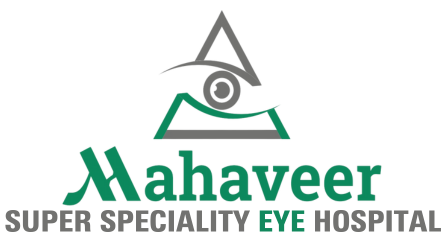In our digital age, prolonged use of computers, tablets, and smartphones has become the norm, often resulting in a common issue known as digital eye strain. Also referred to as computer vision syndrome, digital eye strain encompasses a range of eye and vision-related problems that arise from extended digital device use. Mahaveer Eye Hospital, Pune, understands the challenges posed by digital eye strain and offers valuable tips to help you reduce and manage these problems effectively.
Understanding Digital Eye Strain
Digital eye strain occurs when the eyes are overworked by staring at screens for long periods without adequate breaks. Symptoms include headaches, blurred vision, dry eyes, neck and shoulder pain, and difficulty focusing on the screen. Several factors contribute to digital eye strain, such as poor lighting, glare on the screen, improper viewing distances, poor posture, and uncorrected vision problems.
Tips for Reducing Digital Eye Strain
1. Follow the 20-20-20 Rule
The 20-20-20 rule is a simple yet effective way to alleviate eye strain. Every 20 minutes, take a 20-second break to look at something 20 feet away. This practice helps relax the eye muscles and reduces fatigue caused by prolonged screen use.
2. Adjust Your Screen Settings
Properly adjusting your screen settings can make a significant difference. Ensure that the brightness of your screen matches the ambient lighting in your room. Increase text size and contrast for easier reading, and reduce the color temperature of your screen to minimize blue light exposure, which can cause more strain.
3. Optimize Your Workspace
Creating an ergonomically friendly workspace is essential. Position your screen about 20-24 inches from your eyes and slightly below eye level. Ensure your chair and desk are at appropriate heights to maintain a comfortable posture. Use a document holder next to your screen to avoid frequent head movements.
4. Reduce Glare and Reflections
Glare from windows and overhead lighting can exacerbate eye strain. Use an anti-glare screen filter or adjust the position of your screen to minimize reflections. Close curtains or blinds and position your screen perpendicular to windows to reduce glare.
5. Blink More Often
Blinking is a natural way to keep your eyes moist and refreshed. However, people tend to blink less frequently when using digital devices, leading to dry eyes. Make a conscious effort to blink more often to keep your eyes lubricated.
6. Use Artificial Tears
If you experience dry eyes despite frequent blinking, consider using lubricating eye drops or artificial tears. These products can help alleviate dryness and discomfort associated with prolonged screen use.
7. Take Regular Breaks
Taking regular breaks from screen time is crucial for eye health. Stand up, stretch, and move around every hour to reduce the strain on your eyes, neck, and shoulders. These breaks can also improve overall productivity and well-being.
8. Invest in Computer Glasses
Computer glasses are specially designed to reduce digital eye strain. They can help filter out blue light and reduce glare, making screen time more comfortable. Consult with an eye care professional at Mahaveer Eye Hospital to determine if computer glasses are suitable for you.
9. Maintain Proper Eye Care
Regular eye check-ups are essential, especially if you spend long hours in front of a screen. An eye care professional can identify any underlying vision problems and provide appropriate solutions, such as prescription glasses or contact lenses, to enhance your visual comfort.
10. Implement Eye Exercises
Incorporating simple eye exercises into your daily routine can strengthen eye muscles and improve focus. Techniques such as focusing on a distant object, rolling your eyes, and massaging your temples can alleviate eye strain and enhance overall eye health.
Conclusion
Digital eye strain is a prevalent issue in today’s technology-driven world, but it can be managed effectively with the right strategies. By following these tips from Mahaveer Eye Hospital, Pune, you can reduce eye discomfort and maintain optimal eye health. Remember, regular eye check-ups are crucial for identifying and addressing any vision problems early. Prioritize your eye health and take proactive steps to protect your vision in this digital age.



Leave A Comment